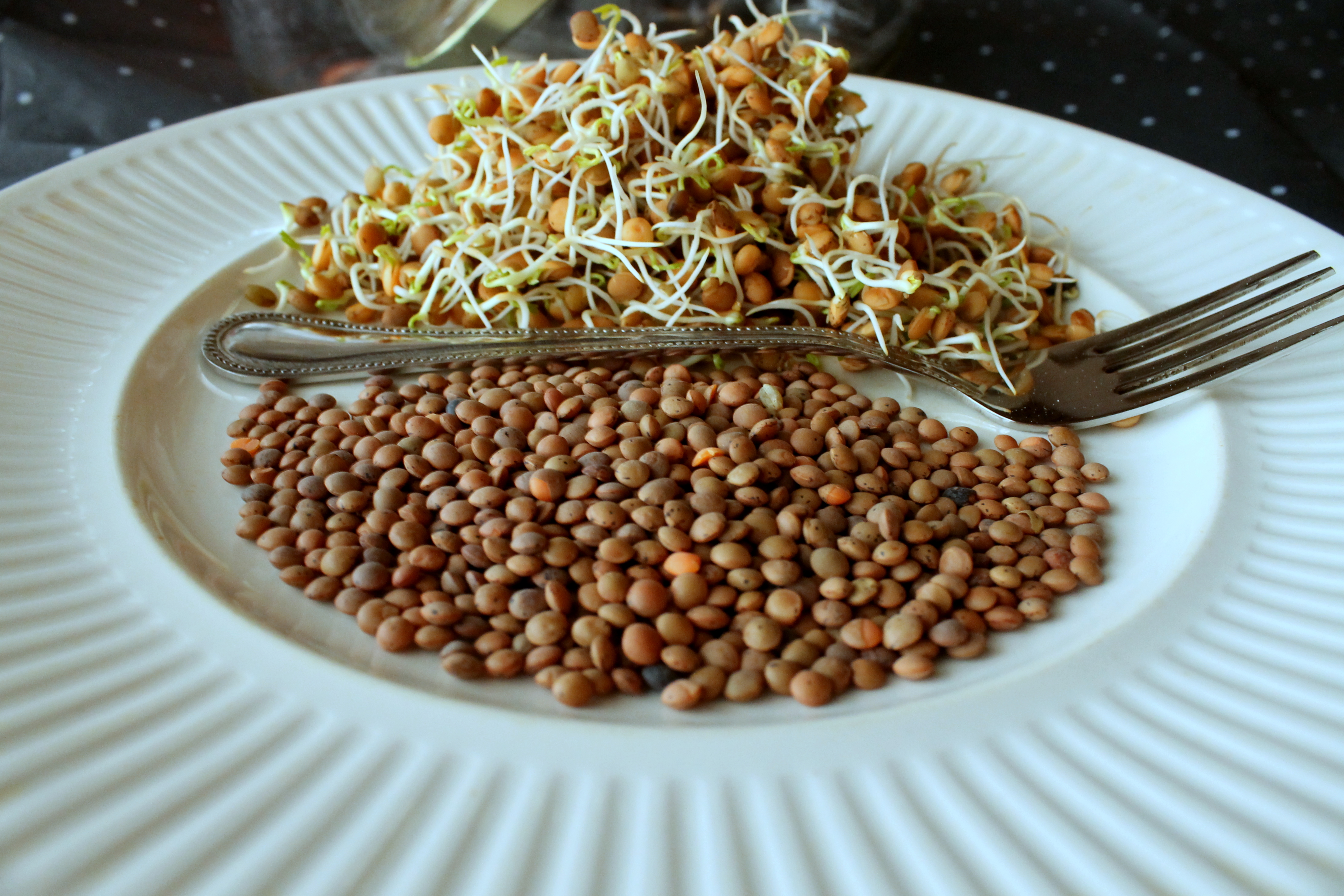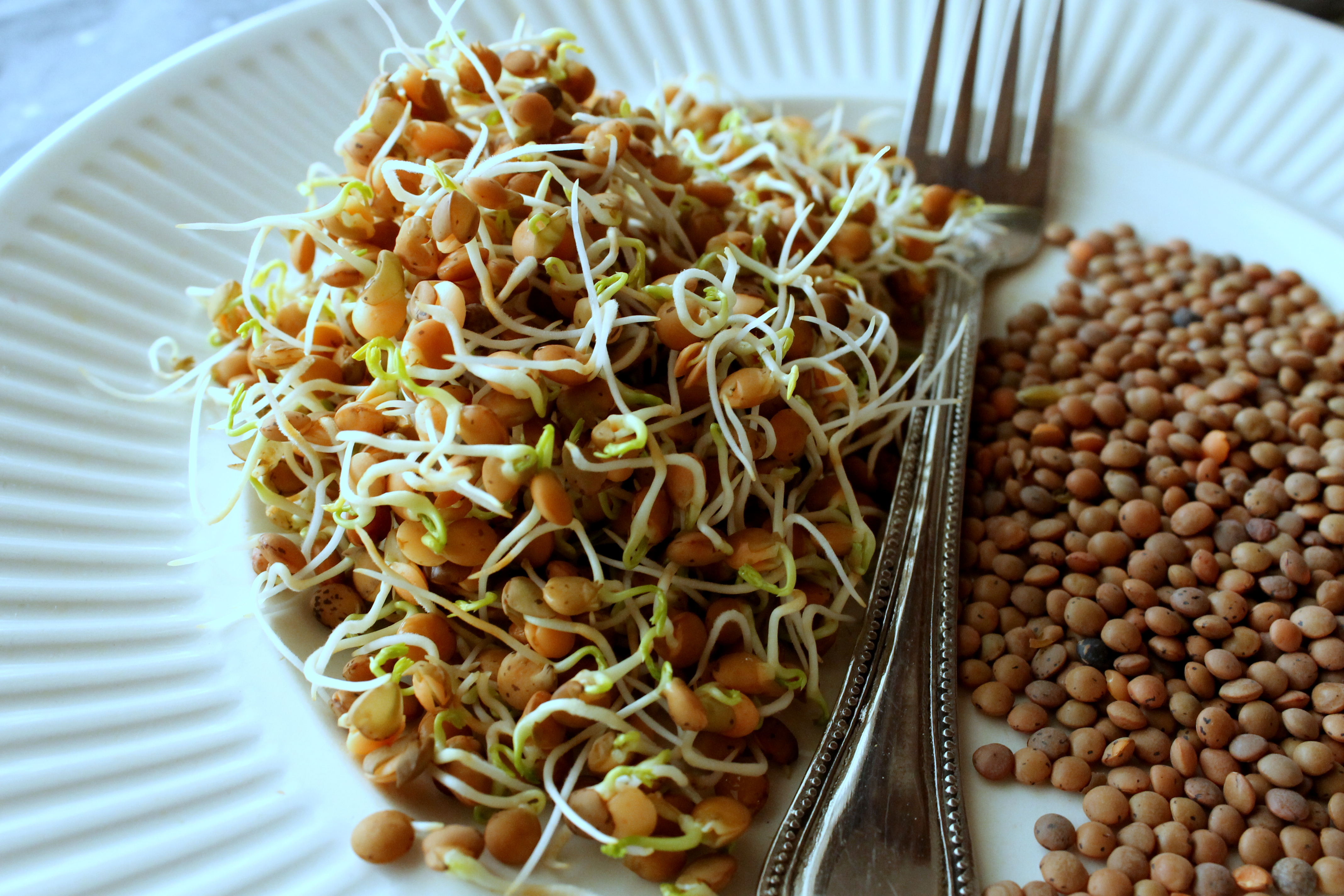Lately I have been sprouting lentils and adding them to my lunch salads. They give my salad an extra bit of density with their starchiness plus they are packed full of fibre, pre-digested protein, carbohydrates, vitamins and minerals!
I have written about sprouting before but here are a few more reasons to sprout 1:
- enzymes are activated in the seed through the process of sprouting
- carbohydrates are converted to simple sugars; proteins are converted into amino acids; and fats are broken down into fatty acids. Essentially all the aforementioned macronutrients are pre-digested which eases the digestive burden on our body
- seeds become alkaline forming, read more about alkalinity here
- since the seed contains its own digestive enzymes it reduces the amount of our body has to make thus saving our digestive enzymes and giving the pancreas a much needed break
- we are able to grow sprouts ourselves without any added chemicals
How do enzymes help digestion?
Since sprouts contain an abundance of active enzymes they are able to help in the digestion of themselves when eaten. The enzymes in foods are only active until about 42*C. If they are heated above this temperature they are permanently destroyed and cannot help in the digestion process. So, to ensure maximal use of this property it is wise to eat the sprouts raw.
The digestion of carbohydrates starts in the mouth and continues in the small intestine with no digestion in the stomach. Proteins are digested in the stomach and fats are digested in the small intestine. When a food contains its own digestive enzymes digestion of the food starts at the mouth and continues throughout the alimentary canal thus making digestion easier as our pancreas has to secrete less digestive enzymes to aid in the digestion of food. This gives our pancreas a rest and our whole body in general. This ‘diverted’ energy can be used by the body to perform other housekeeping duties such as scavenging for cancer cells, creating healthy skin cells, removing toxins, etc.
How to sprout lentils!
Materials:
- bell jar with lid
- lid should have holes punched so that water can be drained out
- alternatively, you can use a mesh that is fastened to the lid with a rubber band
Directions:
- Rinse lentils with filtered water and soak overnight (fill jar twice the height of the lentils in the jar)
- Rinse lentils and drain water after 8 hours
- Let jar rest at an angle so that excess water can drain out
- Rinse lentils 2-3 times a day
- Lentils should be ready to eat after 3-4 days or when the tails are about 3-4 times the length of the seed
Enjoy with salads, blend into soups or create a lentil pate! You can also opt to sprout peas, mung beans, adzuki, or garbanzo beans.
Nutritional Benefits of Lentils 2:
- rich in insoluble dietary fiber which lowers cholesterol, stabilizes blood sugar, and ahem, promotes regularity!
- contains folate which is essential for pregnant ladies and is great for the heart
- contains powerful antioxidants that help with disease, cancer and aging
If you haven’t heard yet, I will be teaching at a Living Foods retreat near Toronto. Check it out here! Also, be sure to like me on facebook and follow me on twitter to get daily tips on living a healthier life 🙂
~Michelle
Holistic Nutritionist.
[1] The World’s Healthiest Foods by George Mateljan
[2] The Living Foods Lifestyle Textbook





